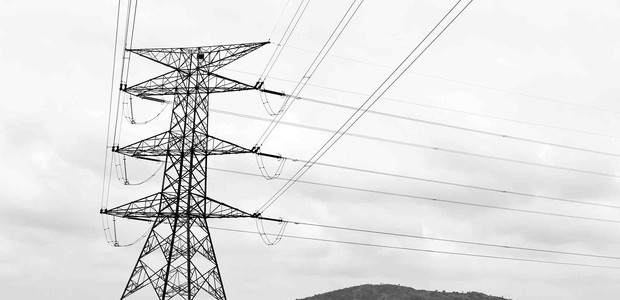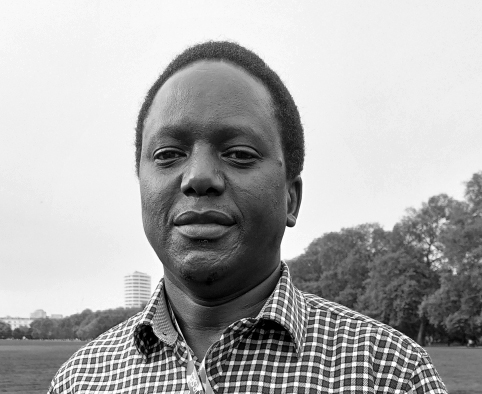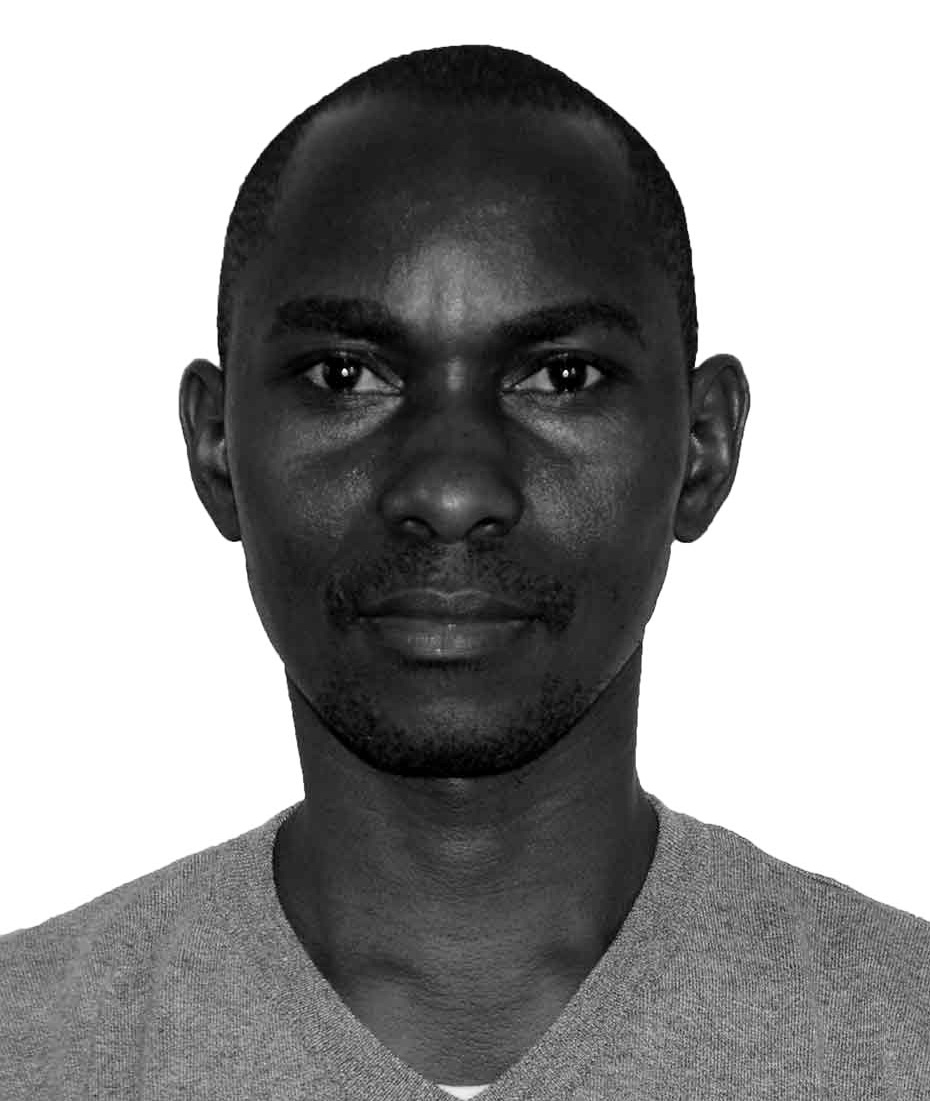Lighting up Rwanda with help from Uganda

Rwandans living in the north-eastern border area with Uganda have closely watched the arrival of sky-high steel pylons in their villages. Both village and town folk are in little doubt about their purpose: the high voltage transmission lines have been built to carry electricity from Uganda to Rwanda.
The story is similar in much of western Rwanda, where locals say the overhead power lines are meant to transfer power from Rwanda to the eastern Democratic Republic of Congo. The transmission lines are all part of the regional electricity interconnectivity programme aimed at connecting Rwanda, DR Congo, Uganda, Burundi and Kenya, a programme under the auspices of the Nile Basin Initiative (NBI).
Once fully operational, the power system will connect the power grids of all these countries – meaning should there be a shortage in one region, a surplus from another country covers up the deficit.
This explains why the project has been working to connect the national grids of Uganda and Rwanda over the last few years. This has been done by building and linking substations in both countries. These facilities receive electricity via a dedicated transmission line.
The regional grid linking Uganda and Rwanda will be served by two sub-stations located in Mbarara City and Mirama Hills, in Ntungamo, in southwestern Uganda. This will then connect to the Shango substation located in Nduba Sector, Gasabo District of Kigali in Rwanda.
Excitement in rural Rwanda
To get a snapshot of how much the imminent arrival of reliable electricity could mean for many Rwandan citizens, The Niles recently embarked on a journey cutting through villages and small towns across Nyagatare, Gatsibo, Gakenke, Nyabihu and Rubavu – the five northern Rwanda districts in which the regional power interconnectivity system transits.
On one Friday evening in March, arriving in Nyagatare, a border city near the Rwanda-Uganda frontier, a power blackout awaited us. For about an hour, the whole town was in darkness. The locals say that load-shedding is “normal” in this area.
The following morning, The Niles headed off to Ryabega town, still in Nyagatare District, using the highway to Kigali. Here, we gate-crashed a wedding ceremony with no music or sound system, despite visible power lines running along the road. The people at the party told us how electricity in the town is “usually on and off”.
We then moved to Gatsibo District, this time heading deep into the countryside until we reached Nyahanga, a small trading centre. The incoming overhead transmission line runs through this small town. We encountered 21-year-old Fidele Myuvekuye. He was born here but works in Kigali.
In Nyahanga, it is only those with significant financial muscle that have electricity cables connected to their homes that are able to tap power off the national grid. The vast majority use small wick-and-paraffin lamps called ‘Udutodoba’.
However, some lucky village folks have benefitted from the ongoing government and private sector schemes to supply solar panels to the most vulnerable homes.
Despite his recent change in life, Myuvekuye told The Niles that his childhood was one without electricity in this village. This perhaps explains his excitement about the new infrastructure being put in place.
The locals need power for lighting homes, charging their phones and being able to run small businesses, Myuvekuye told The Niles.
We hope our leaders
will help us get reliable
power very soon.
“Yes, there are solar panels in some homes, but they give low power. We cannot watch television. We hope our leaders will help us get reliable power very soon,” he said. “It takes me ten to 20 minutes to find where to charge my phone.”
We also met Patrionille Uwimana, 22, a single mother of two coming from her farmland. She rents a house without power. To keep connected, Uwimana spends part of her meagre income on paying for phone charging daily and on fuel for lighting at night. “As for television, like it is with others who have no power, we don’t even think about that,” she said.
Theogene Ntidendeza, 40, is well-known in the area because he rides a motorbike taxi. The father of three told The Niles while riding us to the transmission line running along a hill overlooking the village that he has no television or radio set at home.
“It is a challenge for my children who need light to revise and do homework,” he said. Several parents told The Niles about how the lack of electricity affects their children’s performance in school.
Our next stop, Ngarama trading centre, also found in Gatsibo District, is quite established compared to Nyahanga. We found Innocent Nzabandora, 40, a father of three who runs a welding business. He said his town has electricity, but not at his home, farther away.
“We have been told that this power line that passes here from Uganda will benefit us directly. We hear most of it will go to Kigali to run factories and that we will get the excess,” he said, adding that he knows people keen to open small scale factories in the area but who are put off by the irregular power supply.
The regional transmission line indeed meanders up and down several hills in this country, whose moniker of “land of a thousand hills” fits aptly. From Gatsibo, the lines cut through many hills before they eventually terminate at the Shango substation, which is connected to the grid from Mirama Hills in Uganda.
A similar maze of overhead lines has been built on the Ugandan side. It runs hundreds of kilometres cutting through wetlands and skirting hills and valleys through Kampala, Mpigi, Mityana, Lwengo, Masaka and Mbarara. This dedicated line picks power from several hydroelectricity dams such as Nalubaale, Kiira, Bujagali and Isimba in Jinja along the River Nile.
At Mbarara city, a 220/110 kilovolts substation has two 220 kilovolts line bays to interconnect with the Rwanda network at Shango via Mirama Hills. The Shango substation was completed in December 2019, and so was the Mirama substation, which has been there for a while.
These substations are a small piece of a giant puzzle to light up the region spearheaded by the NBI, an intergovernmental partnership that brings together ten countries that share the River Nile, namely Rwanda, DR Congo, Egypt, Ethiopia, Kenya, Burundi, South Sudan, Sudan, Tanzania and Uganda.
Pamela Byoruganda, the Principal Public Relations Officer at the Uganda Electricity Transmission Company Ltd. (UETCL), the national agency in charge of taking power around Uganda and beyond, told The Niles that both the Mbarara-Mirama Hills-Shango substations were completed and energised in 2018.
“The two countries are now working on the ‘communication hardware’ which will be crucial in configuring the electricity grids to ensure that they communicate on either side of the border,” Byoruganda said.
Diffusing political tension
The regional electricity interconnection grid will most likely come in handy for countries like Rwanda, which have fewer hydropower electricity sources than neighbours like Uganda and could go a long way in boosting electricity supply and usage.
Many optimists also hope sharing resources like electricity could help repair political fractures witnessed over the last three years that saw the main border point at Gatuna closed. It was re-opened in March this year.
Whether the ongoing political battle between Rwanda and Uganda contributed to the delay in switching on the Mbarara-Mirama Hills-Shango substations, those involved with the implementation affirm it had no impact.
Rwanda and Uganda have been embroiled in a bitter fight which broke into the open in February 2019. Since then, in addition to accusing Kampala of planning regime change in Rwanda, it also alleges that the Ugandan government of President Yoweri Museveni has been sabotaging Rwanda’s economy.
Kigali alleges Uganda sabotaged a planned railway line from the Kenyan port of Mombasa to Kampala, on to Kigali. Instead, Uganda preferred the railway line heading to South Sudan.
There have also been reports that Uganda blocked the export of Kenya electricity to Rwanda and another portion of power supplies from Ethiopia.
Alloyce Oduor, the Project Manager for the NBI Nile Equatorial Lakes Subsidiary Action Program Coordination Unit (NELSAP-CU) Regional Rusumo Falls Hydroelectric Project, downplayed the suggestion that the conflict between Rwanda and Uganda is what is delaying the regional electricity interconnection scheme.
He said that the two governments have actually been pushing for quick implementation by facilitating the process.
Harnessing economic ties
“What is remaining,” explained Oduor, “is coordination, harmonisation and synchronisation of the power system protection and telecommunication equipment because these two substations must communicate. They must exchange power system data.”
“The protection systems must communicate as they protect the line. The control engineers in Lugogo control centre in Uganda and those at the national control centre at Gikondo in Rwanda must be able to visualise the take-off of power.”
As of March 2022, the missing link to activate the system has been the Uganda-Rwanda section. The Kenya to Uganda link was completed back in the 1950s. Rwanda-Burundi is operational. Rwanda to eastern DRC is also in place.
According to the 2021 State of the River Nile Basin report, the Nile Basin is the only region in Africa without a functional regional power grid. However, this is expected to change with the forthcoming completion of several transmission lines.
The report notes that substantial progress is being made in establishing regional power grids and linking the Nile Basin countries to regional grids such as the Southern Africa Power Pool.
In the long term, demand for electricity in the Nile countries is set to increase rapidly. This is because of demographic trends and increasing access to electricity, as countries endeavour to achieve economic development and meet the Sustainable Development Goal (SDG) number seven – “Ensure access to affordable, reliable, sustainable and modern energy for all” – by 2030.
Interestingly, although the hydropower potential in the Nile Basin is estimated at 31,000 megawatts, by 2018, about 19 percent of it had been developed. But the report quickly adds that this figure will likely rise to 42 percent when new hydropower plants come into service.
This is why NELSAP-CU, one of the two investment arms of NBI alongside the Eastern Africa Power Pool with support from the United States Agency for International Development (USAID), is working towards the coordinated and smooth synchronised operation of the interconnected grid system in the Nile Equatorial Lakes region.
We will be
in one network.
The previous timetable had been that the interconnection system was to be switched on this past February. Oduor revealed to The Niles that a new operational deadline has been set for mid-2022. “There were some challenges with contractors who underperformed, and all countries are aware of that,” he said.
“The five countries – Kenya, Uganda, Rwanda, Burundi and DRC – will be interconnected. Look at it that way, [currently] Kenya-Uganda are in one island electrically, Rwanda-Burundi-DRC in one island electrically. The separation is Uganda-Rwanda which we want to close. If it’s closed, then we will be in one network,” explains Oduor.
In Kigali, like other regional capitals, the interconnectivity cannot come soon enough. The interconnection projects, like the Shango substation, are vital for regional power exchange and trading across borders and hence access to cheaper power sources. The system will strengthen transmission networks and reduce power losses to ensure the reliability of the electricity supply.
By October 2021, the cumulative power connectivity rate in Rwanda was at 67.1 percent of Rwandan households, according to data from the Rwanda Energy Group (REG). From these national statistics, 48.6 percent of households are connected to the national grid, and 18.5 percent access energy through off-grid systems, mainly solar.
Rwanda’s electricity generation comes from different sources, including hydropower, methane gas and solar. Very soon, peat energy will be added as an 80 megawatts peat-fired power plant constructed for the cost of USD 350 million is turned on in a matter of weeks. Hydropower makes up approximately 46.8 percent of the total installed capacity. The most significant percentage will be from River Nyabarongo, which leads up to River Nile. It is followed by geothermal energy (26 percent), methane (14 percent), peat (7 percent) and solar energy (4 percent).
With the economy growing rapidly over the past two decades, the government must provide electricity to maintain the growth rates. Experts, however, point out that the country can generate electricity economically with local resources estimated to total around 1,613 megawatts. Therefore, the country utilises less than ten percent of its electricity potential.
The Rwandan government has divided the country into Kigali and satellite cities, a strategy to balance out the country’s development. Kigali has three support cities Nyamata (southeast), Rwamagana (east) and Muhanga (south).
There are also what are referred to as secondary cities, basically regional development hubs. There is Nyagatare (northeast), Musanze (north), Rubavu (northwest), Rusizi (southwest), Huye (south) and Muhanga (south-central).
Kigali’s satellite cities are designed to disperse the population and industry and ease life for those residing in the capital. It also aims to create affordable housing for more households.
Unlike Gakenke and Nyabihu districts, whose residents face the same challenges as those in Gatsibo, the availability of power and its impact needs no introduction when it comes to the border town of Rubavu on the DR Congo border.
It is a holiday destination with a vibrant hospitality industry, except for the COVID-19 pandemic, which heavily impacted it. The Congolese have poured into Rubavu in their thousands, with those that have finances living here while they work across in Goma.
The provision of power for this region appears to have been deliberate. There are various power stations which actually send energy to other regions. In fact, the Rwandan government data shows that Rubavu District has a 90 percent power access rate, the second-highest just after Kicukiro, which is located in Kigali.
But just like in other Nile Basin countries, the critical challenges to achieving energy security remain: the electricity supply in most Nile countries continues to be inadequate, unreliable and expensive. Power is generally too expensive for many low- and middle-income consumers.
With the availability of the Shango substation, it adds up to a total of 28 substations in Rwanda. The Rwandan government has set a target to have 44 substations by 2024. Similarly, the installed capacity currently is 225.5 megawatts, with a target of 556 megawatts in the same period.
Rwanda’s private sector
Rwanda’s Private Sector Federation (PSF), the umbrella lobby of the business community, is upbeat about the regional power project. Though power supply has increased locally in recent years, interruptions still exist.
It is this loophole the PSF hopes to rectify. Theoneste Ntagengerwa, the PSF spokesperson, said: “As the private sector, our desire is to always have a high supply of power without any interruptions.”
Sustainability of supply
and reduction in the cost
of power.
“We expect that the impact of the regional power project will be two-fold: sustainability of supply and reduction in the cost of power. There are places, especially designated free economic zones and industrial areas where there is sufficient power supply.”
“However, for our members operating in other areas, say, for example, in residential suburbs, the power is either on or off, or the power has a low intensity which affects their machines. We would want to see all machines operating smoothly.”
Ntagengerwa added: “As the quantity of power increases since the supply from the regional neighbourhood is steady, we expect that it will bring the cost of electricity further down. Yes, power is relatively cheaper in Rwanda, but for us business people, the cheaper the raw materials and inputs, the less the cost of production, which eventually reduces the prices of final goods.”
However, Dickens Kamugisha, the Executive Director of the African Institute for Energy Governance, a Kampala-based non-profit that follows developments in the energy sector in eastern Africa, told The Niles recently that it remains to be seen whether the NELSAP-CU will achieve its objective of having countries within the Nile Basin pooling their electricity resources to end load-shedding, stabilise markets and give consumers alternative choices.
Kamugisha’s reservations are partly informed by independent research.
According to a 2019 report titled, “Energy Infrastructure Investments in East Africa and the Relevance of the Energy Charter Treaty,” James Nyamongo and Lilian Nyamongo noted that although the rapid development of regional energy infrastructure is necessary to achieve economic development and growth in East Africa, electricity demand projections vastly exceeding supply in Africa highlight the magnitude of the task at hand.
A 2011 report by the East Africa Power Pool and the East African Community (EAC) concerning the regional power system master plan and the grid code study also observed that sub-regional countries have not coordinated their efforts in respect of their power systems and have instead been led by national demand.
Kamugisha told The Niles that while the EAPP-NELSAP-CU is important, “its future is not guaranteed, and it appears there are still many more obstacles than enabling factors. The EAPP through the NELASAP-CU may never succeed when power sectors are still weak at the national level.”
“Unfortunately, the EAPP is not concerned with the national power sector problems. This is a big mistake on the part of the NELSAP-CU and NBI generally. So, the implementers of the EAPP are now faced with that reality on the ground.”
[The] power access
and consumption
situation would not
improve without
fundamental reforms.
“There is evidence that even if we started generating 10,000 megawatts today at the prevailing tariffs versus poverty in the country, the power access and consumption situation would not improve without fundamental reforms.” Although bilateral power exchange agreements already exist in the sub-region, the quantities exchanged are not substantial. It was also discovered that exporting countries are challenged by their systemic deficiencies in meeting their delivery commitments.
In 2006, the EAPP was adopted as a specialised institution by the Common Market for Eastern and Southern Africa (COMESA) with the aim of providing it with political clout, especially when negotiating financial contracts with donor agencies. The EAPP members are also partners in the Nile Basin Initiative.
But market liberalisation in the region has been slow as the reforms focus not only on economic benefits but also on political gains (as energy security is the state’s responsibility).
There has also been a need to harmonise contracts in line with national and international standards and laws. In particular, the commercial rules of practice such as commercial frameworks, pricing, transaction settlements, and arbitration between power utilities have proved challenging, resulting in delaying the implementation of the project.
Kamugisha told The Niles that the NELSAP-CU and NBI need to make the EAPP attractive to countries with less power generation by, for instance, supporting the power sectors in such countries.
“There is also a need to reduce suspicion and mistrust in EAC to stop countries like Uganda and Rwanda from blame games,” he said, stressing that “cross border projects require harmony among countries”.


